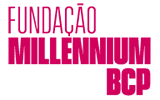entry: General Conditions
Objectos de errância
Marta Wengorovius
Libation
Question: How do you transform one of the most intimate, subjective and idiosyncratic activities of artistic practice into a social activity, and why?
Drawing is an activity that has a peculiar status within artistic practice, but one which, in its myriad forms, extends beyond the artistic realm, being a widely used social device. In referring to drawing, we are talking about artists’ preparatory drawings, project drawings, drawing as a specific medium, architects’ sketches, page margin doodles, the leaves of school exercise books filled with drawings of Manga heroes, the indications of directions that we scrawl or that are given to us to guide us on a trip to distant friends, summaries of meetings, organisational charts, the mind mapping we employ as we attempt to plan our future choices and handwriting. Every activity, in short, which inscribes and describes thought processes using graphic forms.
Drawing, in its essential diversity, is not, therefore, an artistic medium. It is a practice that results in various examples of execution, of performativity. A significant part of this performativity relates to communication situations, such as giving directions, maps, technical drawings, scientific drawings, etc.
Thus drawing is not an unmediated activity arising from the radical subjectivity of the artist, or a mere piece of stylistic performativity, but a social practice of inscription which develops out of protocols of recognition. Marta Wengorovius’s civic drawing is a development of this understanding of drawing, transforming it into a collective realization of sharing the communicative graphic experience of drawing.
Question: why a homage to Nuno Teotónio Pereira?
The starting point for the collective practice proposed by Marta Wengorovius is the communal and voluntary completion of a task leading to a drawing inscribed in the city, in the street.
It is an activity that is based on a preliminary map of activities, that is, on a project, which is developed with the construction of templates that are placed on the ground and which determine the boundaries of a cleansing activity, carried out as a group task. In other words, Marta Wengorovius transforms drawing into a collective activity leading to a matinal libation of the city, with all the implications of ritual and offering that the term carries with it.
Being a process of purification, it should, or could be an offering. An offering to the architect whose entire career has been regulated by a civic practice of architectural drawing, who has always seen the ethical potential of architecture to create better conditions for society. Who himself, in other words, has always approached architecture as a kind of offering.
Question: Does this project have a political component?
In terms of understanding artistic practice, the political potential of a collective act of drawing as an offering lies in the creation of a sensible plane in which sharing is possible. In the joint production of a drawing, in its ritualistic and celebrational dimension, there is potential for the constitution of a community that is exclusively founded on the will of its collective constitution.
This community is fragile and performative.
Its poetry is that of sharing.
Delfim Sardo, April 2011








